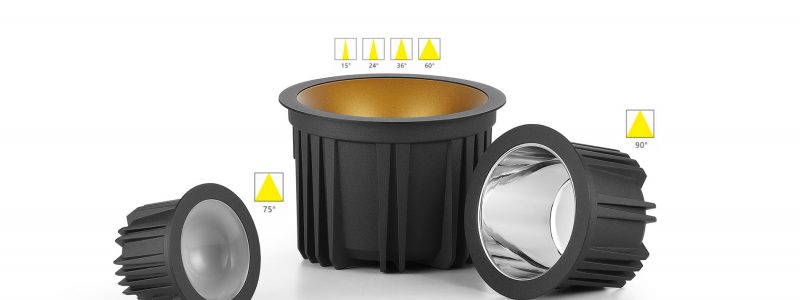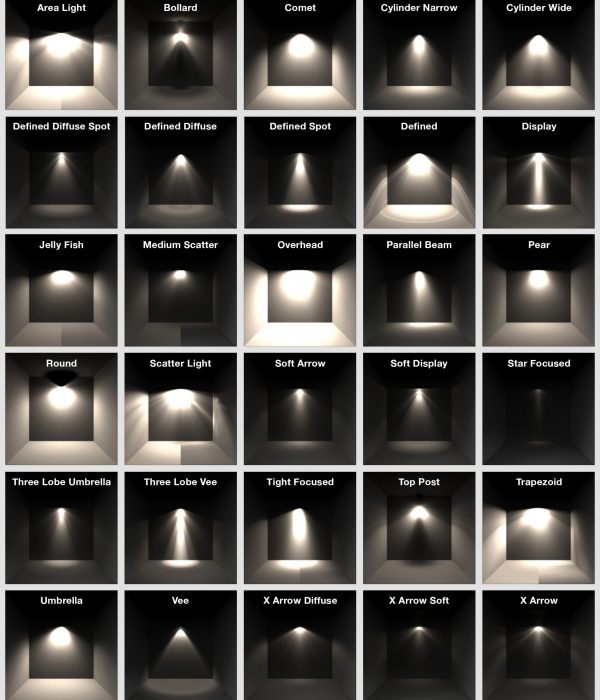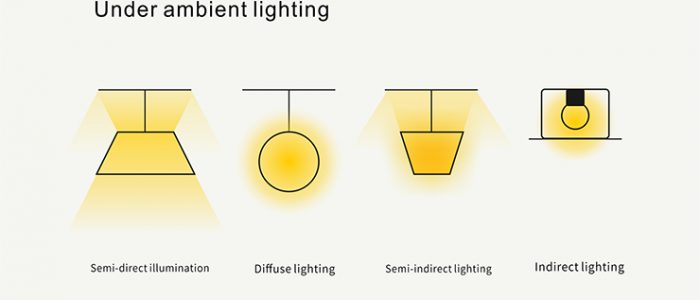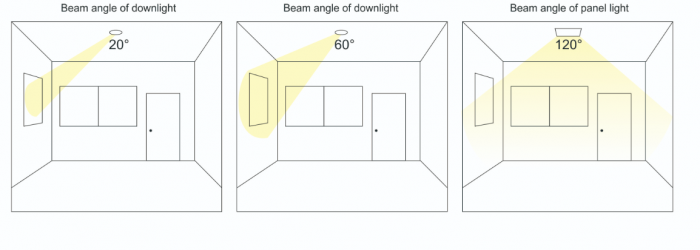Illumination plays a crucial role in shaping the ambiance and functionality of any space. When it comes to LED downlights and spotlights, one often overlooked yet essential factor is the beam angle. The beam angle determines the spread and direction of light emitted by the fixture, impacting the coverage area, intensity, and overall lighting effect. Whether you’re designing a cozy living room, a functional kitchen, or an art gallery, choosing the appropriate beam angle is a critical decision that can greatly enhance the visual appeal and usability of the environment

In the past year, we always distinguished downlights and spotlights by the angle of light.
Nowadays, with the development of optical technology, even the same luminaire can achieve a variety of lighting angles.
For example, in KLM’s new super downlight series, the entire series can reach 15° 24° 36° 60° 75°, and 90°. One luminaire can meet the needs of almost all different lighting environments, It is an innovation for both customers and manufacturers.
What’s LED Spotlights Beam Angle:
The beam angle is the angle at which light is emitted from the LED fixture. It is typically measured in degrees and refers to the width of the cone of light produced. A narrower beam angle concentrates light in a specific area, while a wider angle spreads light over a larger surface.
When selecting the beam angle for LED spotlights, what factors should be considered?
Room Size and Layout: The dimensions and layout of the room play a pivotal role in selecting the appropriate beam angle. In larger spaces, wider beam angles (around 60 degrees or more) might be preferred to ensure even coverage. In smaller areas, narrower beam angles (around 30 degrees) can create focused pools of light.
Ceiling Height: The height of the ceiling impacts how the light is distributed. Higher ceilings may require a narrower beam angle to ensure sufficient illumination reaches the intended surfaces, while lower ceilings may benefit from a wider beam angle for more even lighting.
Task or Accent Lighting: Consider the primary purpose of the lighting. For task lighting, such as kitchen countertops or office desks, a narrower beam angle can provide focused illumination. For accent lighting, like showcasing artwork or architectural details, a spotlight with a narrower angle can help draw attention.
Ambiance and Mood: The beam angle influences the mood and ambiance of a room. A narrow beam angle can create dramatic pools of light and shadow, ideal for creating a cozy and intimate atmosphere. A wider beam angle can deliver a softer and more diffused light, suitable for general lighting or a relaxed setting.
Art and Décor: When highlighting specific objects, decorations, or artwork, a spotlight with a narrow beam angle can precisely direct attention to the desired focal points.
Fixture Adjustability: Some fixtures offer adjustable beam angles, allowing you to fine-tune the lighting according to your changing needs or the room’s function.
Combining Beam Angles: For comprehensive lighting, consider using a combination of fixtures with different beam angles to achieve layered illumination. This approach provides both functional and aesthetic benefits.









